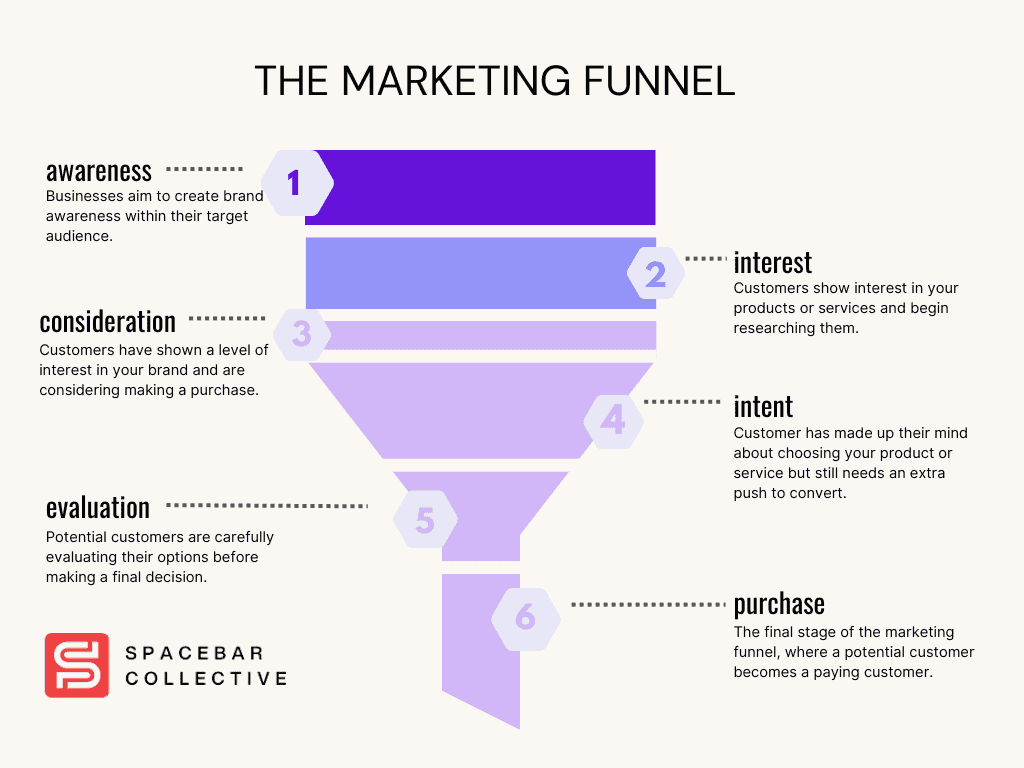What is demand generation?
Demand generation is the long-term process of creating and nurturing interest in a company’s products or services through customer education. Effective demand generation efforts will build a consistent stream of new business, creating a predictable pipeline of growth.
Demand generation marketers strive to pinpoint potential prospects using behavioural data, nurturing leads along the sales funnel.
Demand Generation vs Lead Generation
Demand generation and lead generation are both crucial aspects of marketing, but they serve distinct purposes in the sales funnel.
Demand generation focuses on creating brand awareness across a broad audience. It involves strategies like content marketing, social media engagement, and educational campaigns to generate interest and build brand reputation. Common channels for demand generation include email, SEO, and paid advertising.
Lead generation is a targeted approach designed to identify and capture potential customers who have shown interest in your business by sharing their contact details. Strategies for lead generation include the use of forms, gated content, and tailored advertising, all aimed at gathering leads for the sales team to follow up on.
While demand generation casts a wider net to attract prospects, lead generation targets individuals who are more likely to convert into customers. Both components are essential for a successful marketing strategy, with demand generation laying the foundation for lead generation to thrive.
The Content Marketing Funnel Explained
The traditional marketing funnel consists of six distinct stages, each characterised by its unique intricacies and optimal content types. The funnel outlines the customer’s path from initial brand awareness to the final purchase decision.
- Awareness: During the initial phase of the funnel, companies strive to generate brand awareness among their target demographic using a variety of growth channels such as paid advertising, organic social media, and SEO.
- Interest: The interest stage is where a potential customer (or user) is already aware of your brand and begins to research more about them. They are not quite yet ready to make a purchase decision.
- Consideration: As the name suggests, potential customers are considering making a purchase and have already shown some level of interest in your brand’s offering. It’s at this point where they begin to compare your product or service to your competitors.
- Intent: In the intent stage, the potential customer has already made up their mind in choosing your brand over your competitors but still needs a little extra push to actually convert into a paying customer (or free signup in the case of freemium SaaS models).
- Evaluation: At this crucial stage of the funnel, potential customers are weighing their options, considering various factors such as price, quality, and features, before making their final purchasing decision.
- Purchase: The end goal of the marketing funnel: converting a potential customer into a paying one.

While this may sound overly complicated at first glance, these 6 funnel stages can be simplified down to 3: top, middle and bottom of the funnel.
The top of the marketing funnel consists of the brand Awareness and Interest stages. It’s at this point in the buyer journey that potential customers are getting first acquainted with your brand.
Next is the middle of the funnel: the Consideration and Intent stages. This is arguably the most difficult stage to build marketing content for because it’s where you do the groundwork of customer education. Customers are beginning to compare your brand to your competitors, so it’s crucial you don’t miss out on this funnel stage.
Finally, we have the bottom of the funnel, where all the conversions happen in the Evaluation and Purchase stages. It’s here where customers have done all their homework and are ready to make a final purchase decision.
Building Brand Awareness for Your SaaS
With how competitive SaaS can be, it’s absolutely critical to build brand awareness through any means possible. In this blog, we’ll cover 4 primary channels for demand generation you can use to build brand awareness for your SaaS company: SEO, paid advertising, email marketing and referral marketing.
By using all of these channels or any combination of the 4, SaaS founders can expand their user base effectively. SEO is the strongest long-term play of these channels, focusing on driving traffic through existing demand via search engines. Paid advertising campaigns can drive immediate traffic and conversions. Email marketing allows for more personalised communication on a 1 to 1 level, invaluable in nurturing leads and moving people down the funnel. Referral marketing taps into existing networks, resulting in some of the easiest conversions of any channel.
Demand Generation Channels for SaaS Companies
To achieve sustainable growth and broaden their user base, SaaS founders need to skillfully leverage a variety of demand generation channels. The 4 channels we recommend the most for SaaS companies are SEO, paid advertising, email marketing, and referral marketing.
SEO lays a solid long-term foundation by tapping into search demand, while paid advertising brings in immediate results. Email marketing enables personalised engagement, smoothly leading prospects through the sales funnel. Referral marketing leverages existing networks for effective conversions.
By implementing a multi-channel approach to demand generation, SaaS companies can effectively enhance their visibility and fuel their growth in both the short and long term.
Thank you for your sharing. I am worried that I lack creative ideas. It is your article that makes me full of hope. Thank you. But, I have a question, can you help me?